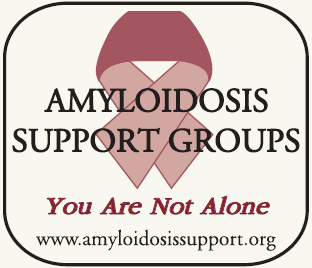Trusted Resources: Education
Scientific literature and patient education texts
Therapeutic Oligonucleotides Targeting Liver Disease: TTR Amyloidosis
source: Molecules : A Journal of Synthetic Chemistry and Natural Product Chemistry
year: 2015
authors: Niemietz C, Chandhok G, Schmidt H
summary/abstract:The liver has become an increasingly interesting target for oligonucleotide therapy. Mutations of the gene encoding transthyretin (TTR), expressed in vast amounts by the liver, result in a complex degenerative disease, termed familial amyloid polyneuropathy (FAP). Misfolded variants of TTR are linked to the establishment of extracellular protein deposition in various tissues, including the heart and the peripheral nervous system. Recent progress in the chemistry and formulation of antisense (ASO) and small interfering RNA (siRNA) designed for a knockdown of TTR mRNA in the liver has allowed to address the issue of gene-specific molecular therapy in a clinical setting of FAP. The two therapeutic oligonucleotides bind to RNA in a sequence specific manner but exploit different mechanisms. Here we describe major developments that have led to the advent of therapeutic oligonucleotides for treatment of TTR-related disease.
organization: Universitätsklinikum Münster, GermanyDOI: 10.3390/molecules201017944
read more full text
Related Content
-
From older to younger: intergenerational promotion of health behaviours in Portuguese families affected by familial ...What is this summary about? This is a p...
-
Julia Platt, MS, LCGCJulia earned her MS in Genetic Counselin...
-
Amyloidosis Awareness: For Patients and Their Support Network, Including Physicians, Nurses and Medical Students [En...All the normal proteins in our body are ...
-
Voorlichting Over AmyloidoseAlle normale eiwitten in ons lichaam zij...
-
Isabel Morgado, PhDDr. Isabel Morgado is working as a Sci...
-
FDA OKs Inotersen (Tegsedi) for Hereditary ATTR With PolyneuropathyThe US Food and Drug Administration (FDA...
-
The Role of Gelsolin Domain 3 in Familial Amyloidosis (Finnish Type)In the disease familial amyloidosis, Fin...
To improve your experience on this site, we use cookies. This includes cookies essential for the basic functioning of our website, cookies for analytics purposes, and cookies enabling us to personalize site content. By clicking on 'Accept' or any content on this site, you agree that cookies can be placed. You may adjust your browser's cookie settings to suit your preferences.
More information
The cookie settings on this website are set to "allow cookies" to give you the best browsing experience possible. If you continue to use this website without changing your cookie settings or you click "Accept" below then you are consenting to this.
To improve your experience on this site, we use cookies. This includes cookies essential for the basic functioning of our website, cookies for analytics purposes, and cookies enabling us to personalize site content. By clicking on 'Accept' or any content on this site, you agree that cookies can be placed. You may adjust your browser's cookie settings to suit your preferences.
More information
The cookie settings on this website are set to "allow cookies" to give you the best browsing experience possible. If you continue to use this website without changing your cookie settings or you click "Accept" below then you are consenting to this.



 myBinder
myBinder




